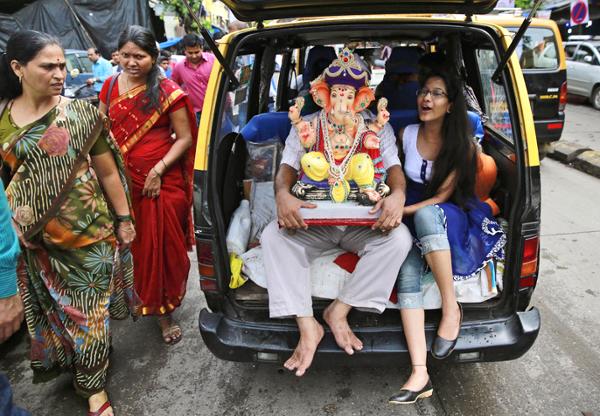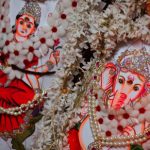PRITESH NAIK
Ganesh Chaturthi, also known as Chavath, celebrated during the Hindu month of Bhadrapad is a perfect example of how our ancestors connected together and worshipped the lord. Lord Ganesha, known best as the lord of good fortune, is revered in a variety of manners across the state. Every village has its own unique tradition, but the basic thing is getting the families and communities together.
In most parts, worship of lord Ganesha ranges from 1 and half day to 5 days, but many joint families in Goa continue the festivities for up to 21 days. All the people who have relocated for jobs, studies, business etc. return to their native places for Chaturthi. In many houses, to give a fair share of the working and the expenses, the tradition of Varsal is observed wherein every family gets a turn to perform puja. Some families are so big that to get your turn it takes as many as 10 years.
In the village of Adpai in Ponda, 12 families celebrate the festival together. For five days, members of the families, scattered across the state, come back to the village to celebrate. The entire village uniformly celebrates Chavath for the entire five days. On the third day, Adpaikars stage various scenes depicting traditional values, mythology and cultural beliefs in their homes. This attracts people from across the state. The fifth day is marked with processions displaying tableaux of various scenes, which are taken to the banks of the Zuari river for the immersion ceremony.
In Mahalwada, Poinguinim, the ‘Saraswat Prabhu Gaonkar’ community does not worship the clay idol but instead worships only patri, a collection of wild leaves brought from the jungle.
Some families of Tudal, Gaondongri (Canacona) celebrate Chavath for three days. For the first one-and-half day they hide the idol under a winnowing item and then worship it for the remaining days. On the last day they make an offering of chicken.
In Veling and Khandepar villages of Ponda, instead of a clay idol, devotees worship a picture of Ganapati drawn on plain paper. This practice evolved during the Portuguese regime when Goan Hindus were restricted from worshipping any idol. The devout would close their doors and windows and worship the picture in a concealed manner. Even though, it’s been 56 years since Goa’s liberation, the worship tradition still remains the same.
The Vaidya community of Vaizawado, Vaje-Shiroda, worship only wooden idols of Ganapati. The idol is later immersed in water for some time and then brought back and kept inside the worship room of the house, to be worshipped for the following year.
Lord Ganesha is also associated with arts, and is often invoked before the commencement of a dance or drama presentation, which is why, Chavath – the celebration of Ganesh Chaturthi – is marked with enthralling and live performances of folk dances and folk music. Various devotional songs, composed by saint poets, are sung by folk artists to the tunes of music composed using folk instruments such as ghumat, shamel and kasale.
Every ward in the village have their own bhajan groups which perform aartis in every house. This tradition of bhajans gets people from all the houses to come together.
The traditions that have been followed in different villages since times immemorial have one thing in common, and that is the very essence to get the families and the communities to come together.



























